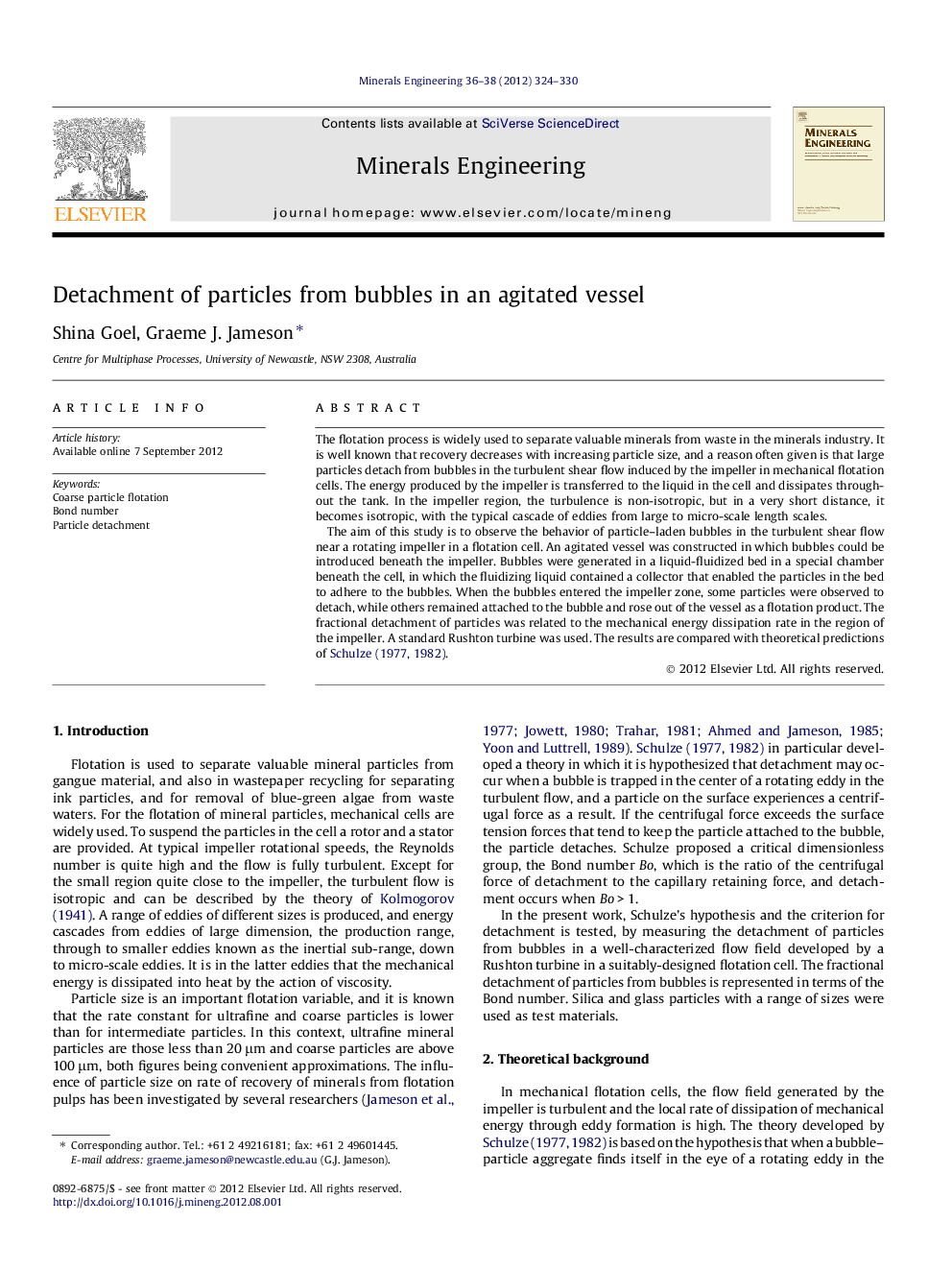| Article ID | Journal | Published Year | Pages | File Type |
|---|---|---|---|---|
| 233556 | Minerals Engineering | 2012 | 7 Pages |
The flotation process is widely used to separate valuable minerals from waste in the minerals industry. It is well known that recovery decreases with increasing particle size, and a reason often given is that large particles detach from bubbles in the turbulent shear flow induced by the impeller in mechanical flotation cells. The energy produced by the impeller is transferred to the liquid in the cell and dissipates throughout the tank. In the impeller region, the turbulence is non-isotropic, but in a very short distance, it becomes isotropic, with the typical cascade of eddies from large to micro-scale length scales.The aim of this study is to observe the behavior of particle–laden bubbles in the turbulent shear flow near a rotating impeller in a flotation cell. An agitated vessel was constructed in which bubbles could be introduced beneath the impeller. Bubbles were generated in a liquid-fluidized bed in a special chamber beneath the cell, in which the fluidizing liquid contained a collector that enabled the particles in the bed to adhere to the bubbles. When the bubbles entered the impeller zone, some particles were observed to detach, while others remained attached to the bubble and rose out of the vessel as a flotation product. The fractional detachment of particles was related to the mechanical energy dissipation rate in the region of the impeller. A standard Rushton turbine was used. The results are compared with theoretical predictions of Schulze, 1977 and Schulze, 1982.
Graphical abstractFigure optionsDownload full-size imageDownload as PowerPoint slideHighlights► Detachment of particles from bubbles in the impeller zone of a stirred vessel has been measured. ► Results are compared with theoretical predictions of Schulze. ► Detachment occurs over a range of Bond numbers. ► The Bond number at which 50% of the particles detach can be used as a criterion. ► Predictions from theory are broadly correct.
